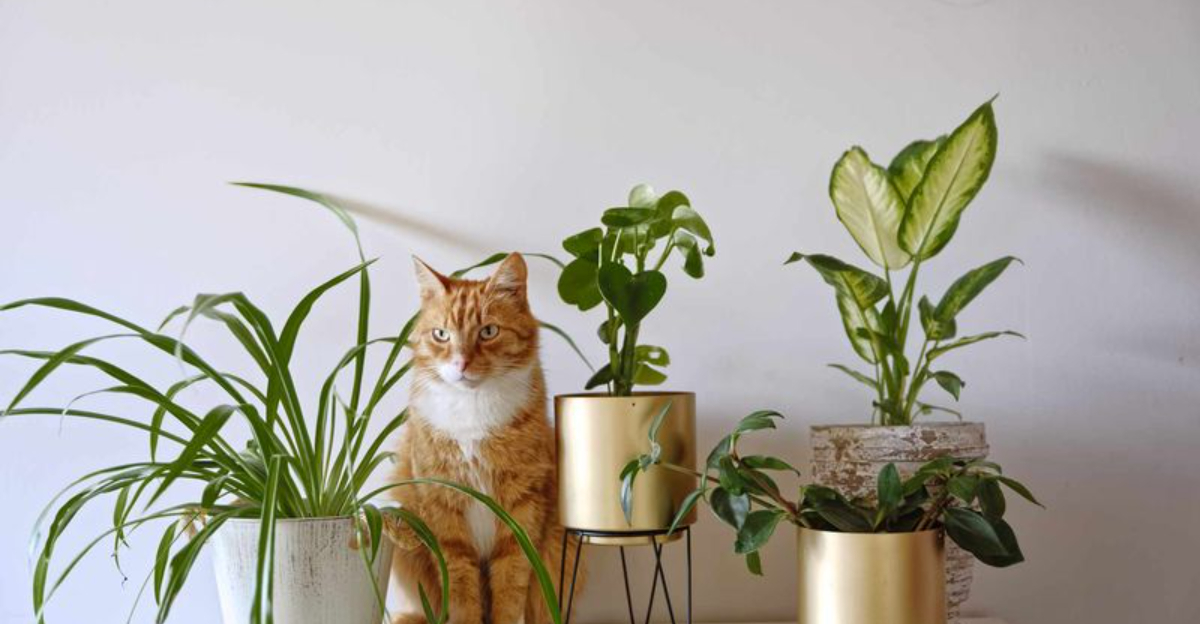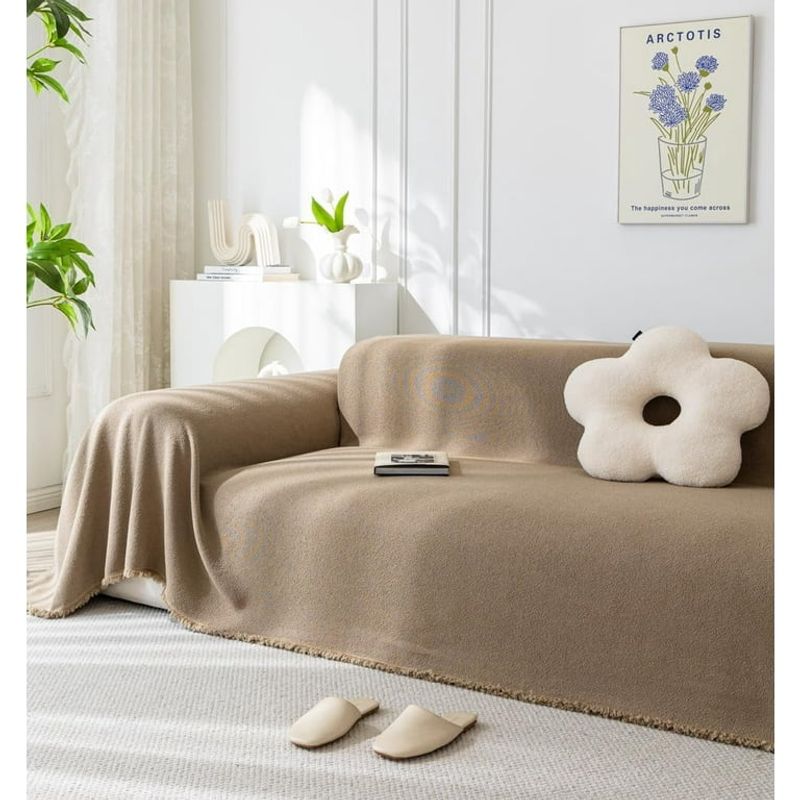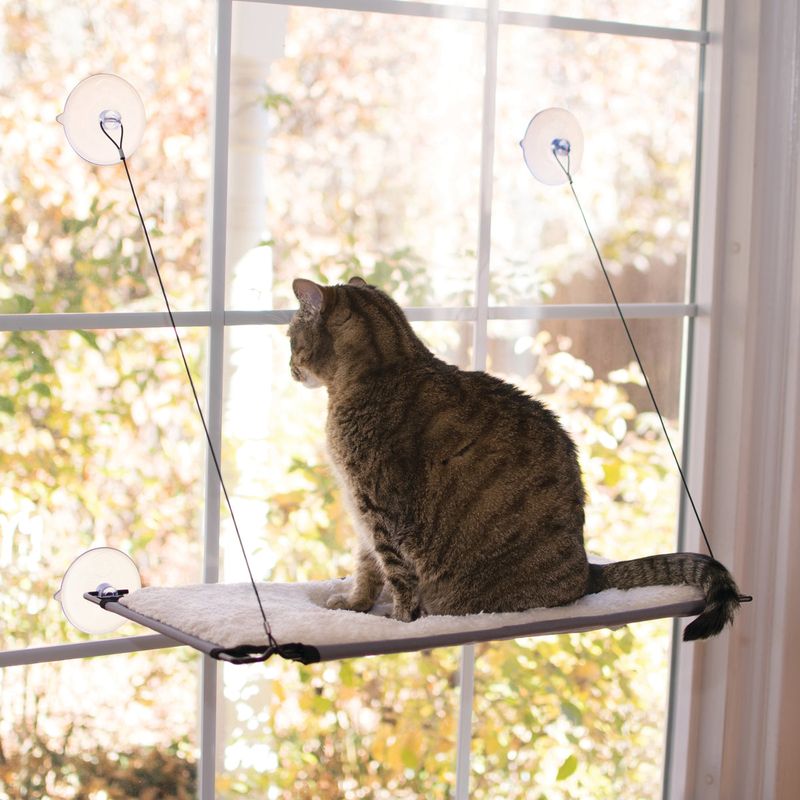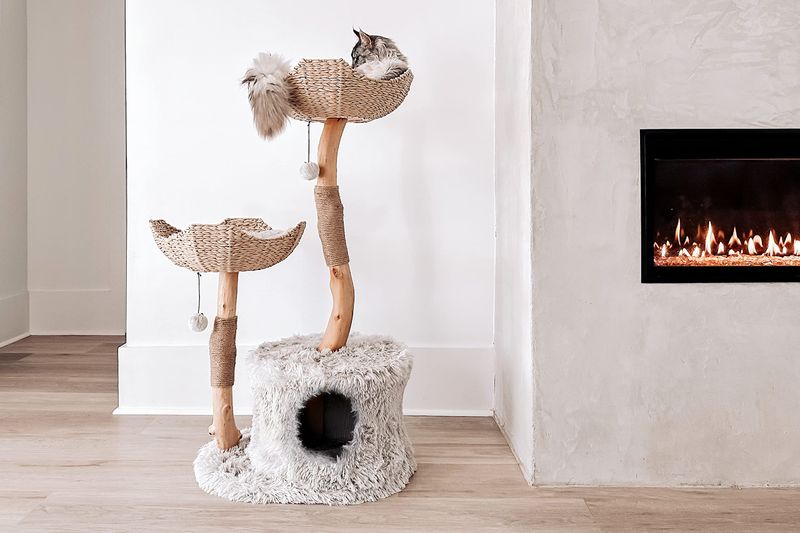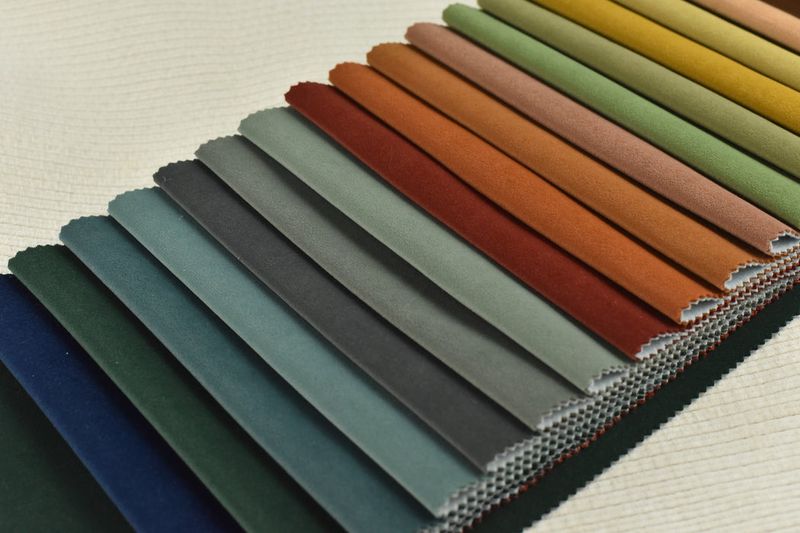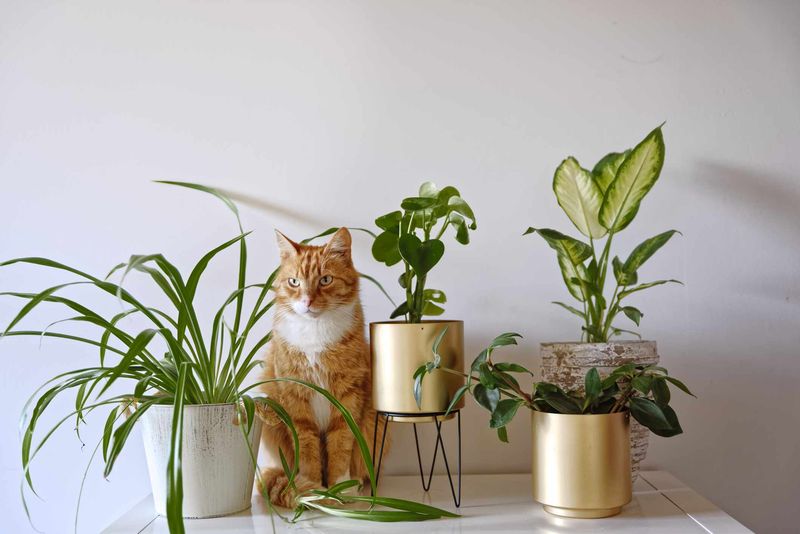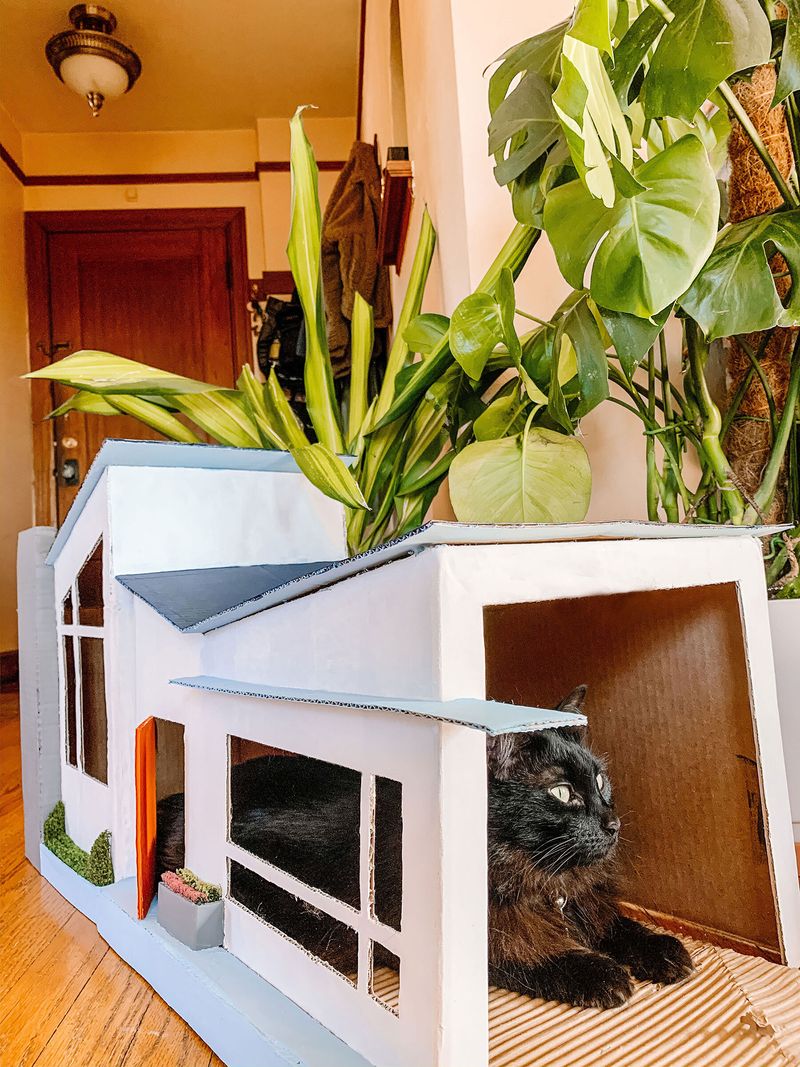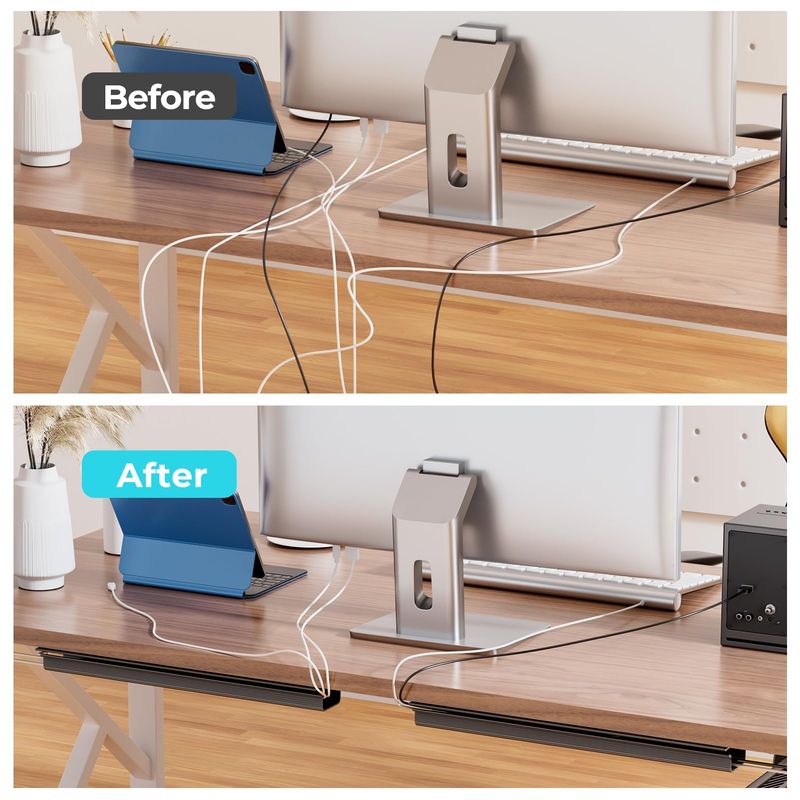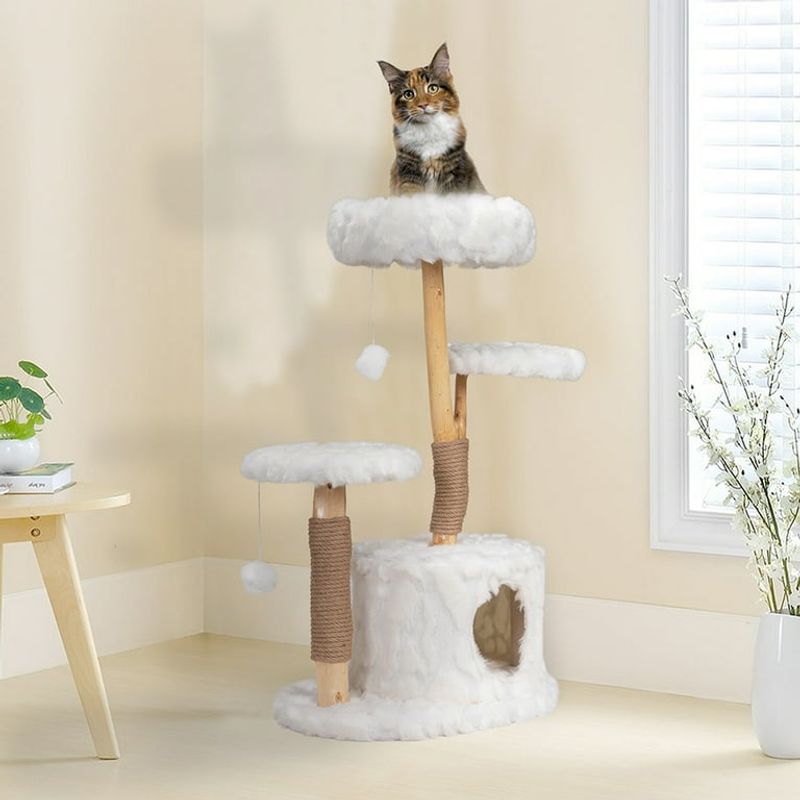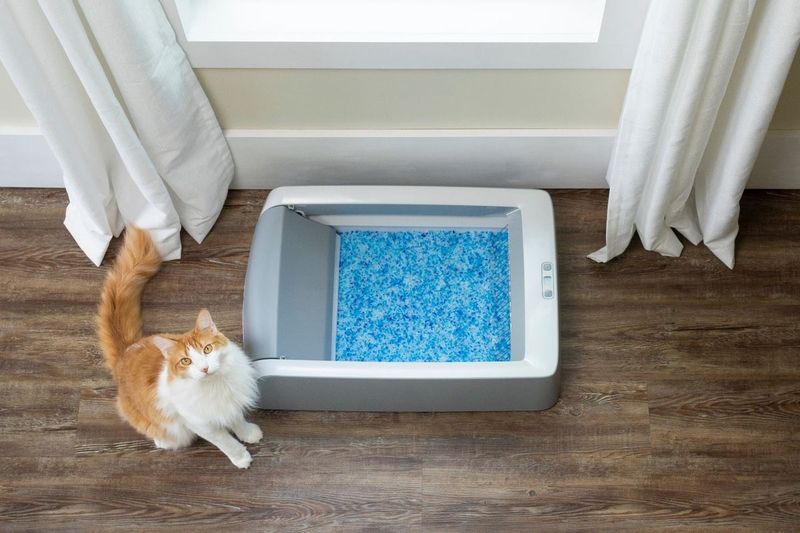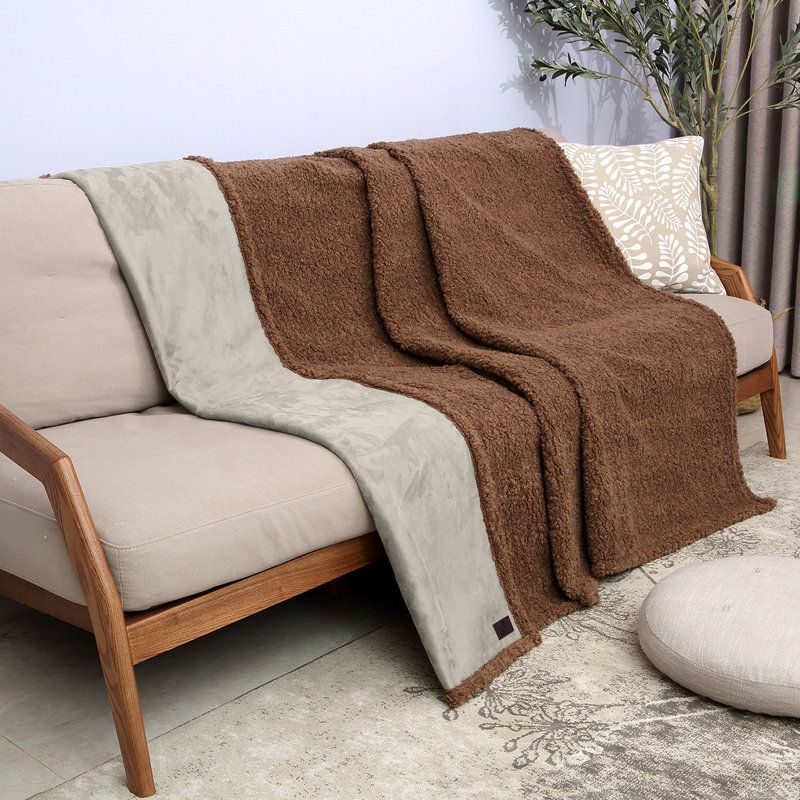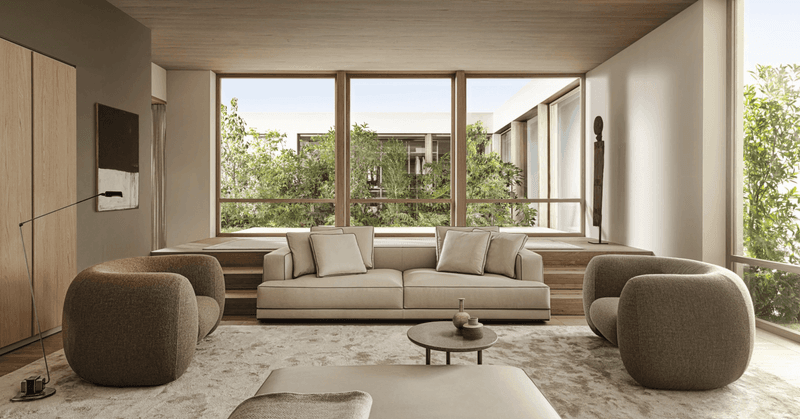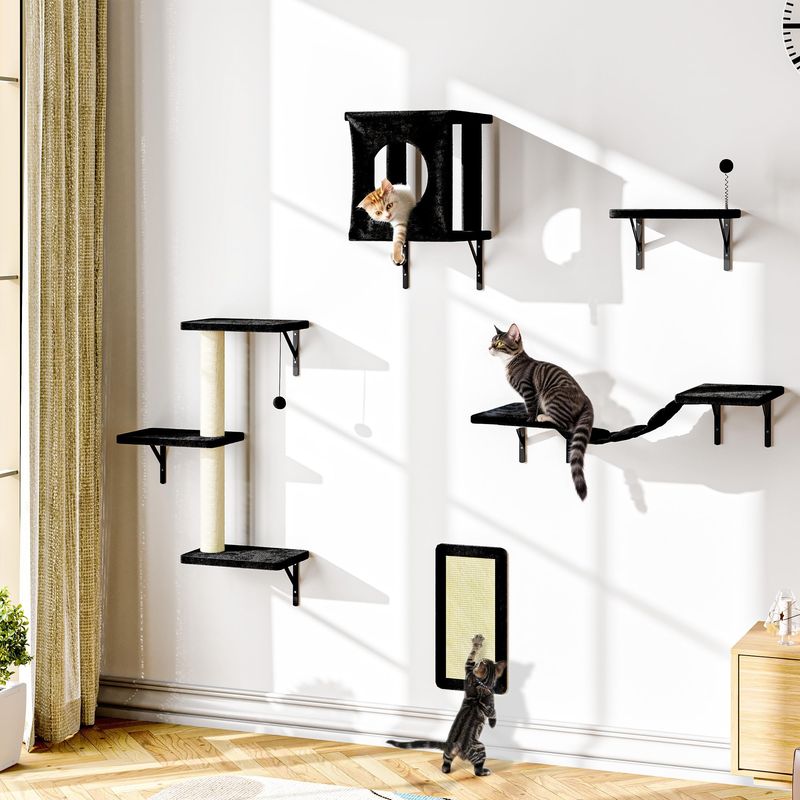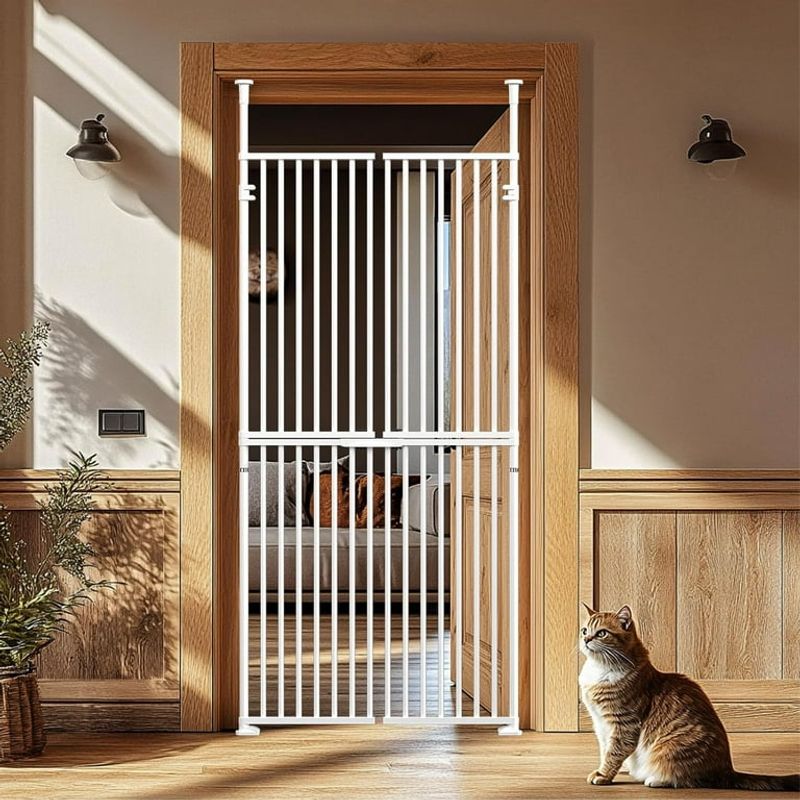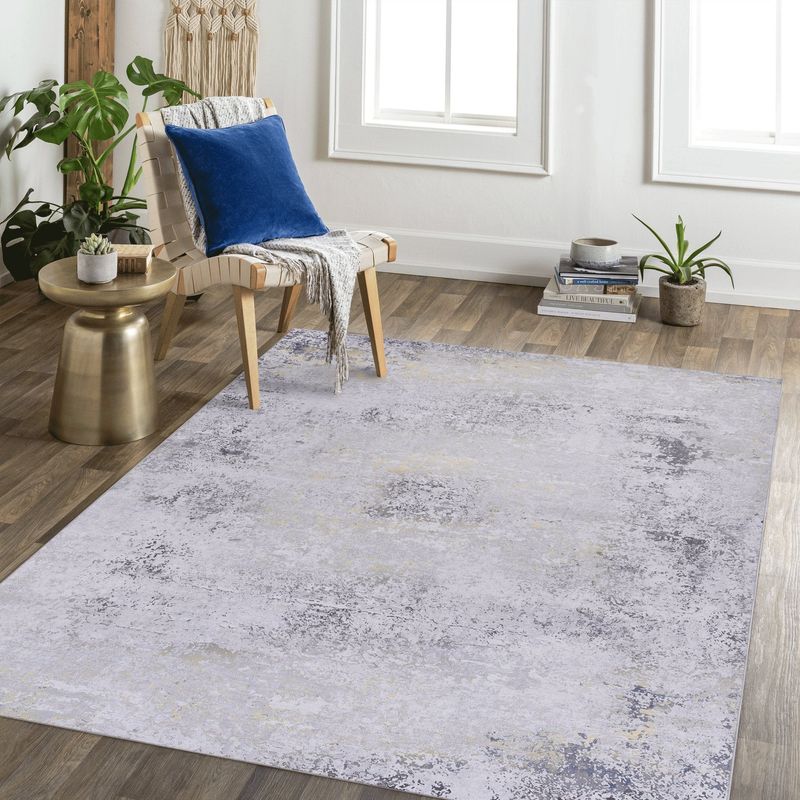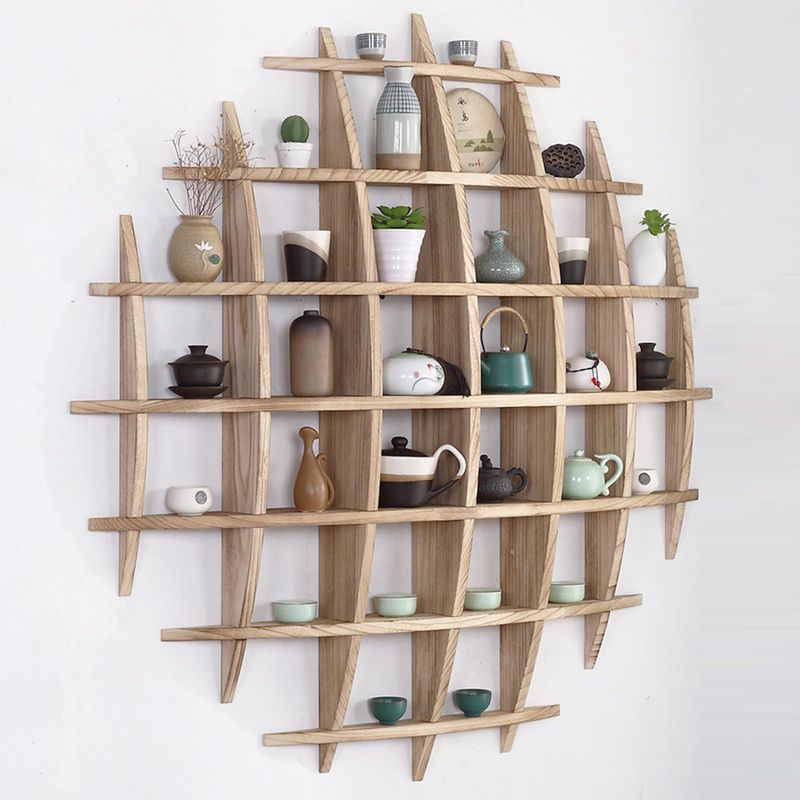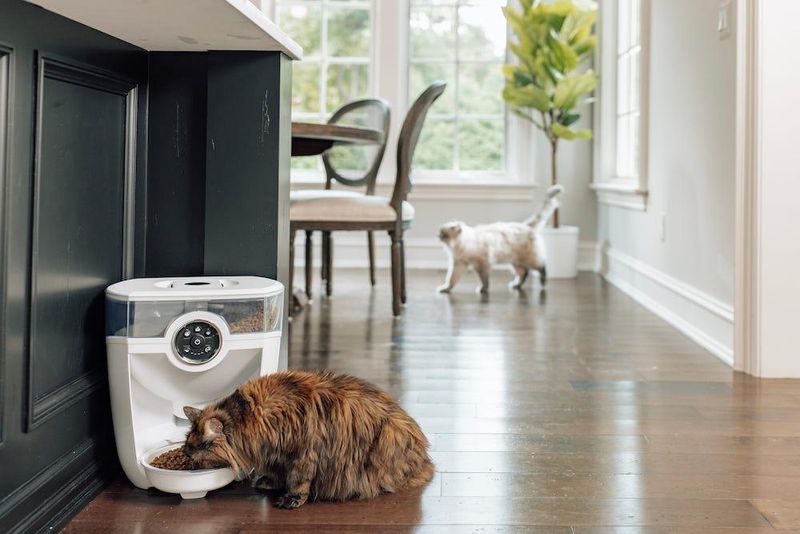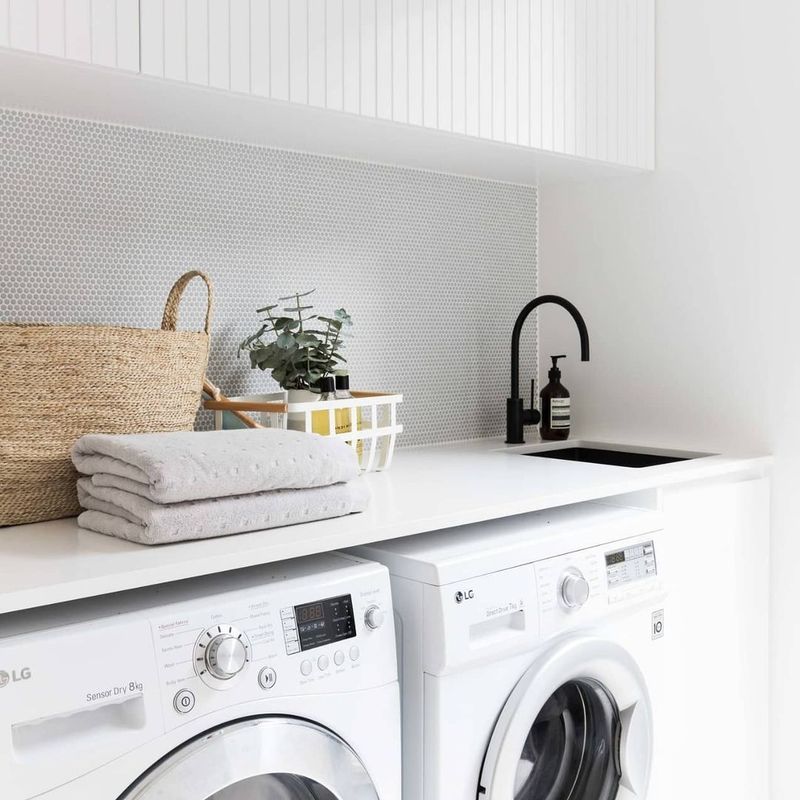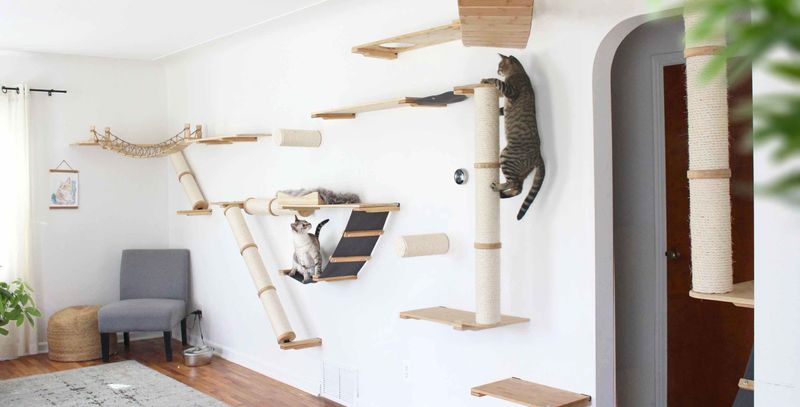Cats bring joy, comfort, and a touch of wildness into our lives, but creating the perfect environment for them requires thoughtful planning.
Our feline friends have specific needs that, when met, lead to happier cats and more harmonious households.
No matter if you’re a new cat parent or looking to upgrade your current setup, these tips will transform your space into a feline paradise while maintaining your home’s style and comfort.
1. Choose Washable Slipcovers
Fur happens! When living with cats, removable and machine-washable slipcovers become your best allies in the battle against hair and occasional accidents.
Look for durable fabrics like microfiber or canvas that withstand frequent washing without losing shape. Neutral colors typically hide fur better than dark solids, while patterns can masterfully camouflage both hair and small stains between washings.
2. Create Cozy Window Perches
What could be more captivating than watching the world go by? For your feline companion, window perches offer front-row seats to nature’s entertainment channel. Sunny spots become instant cat magnets, providing warmth and endless bird-watching opportunities.
Install secure shelves or purchase ready-made window hammocks that attach with strong suction cups for safety. The perfect perch combines stability with comfort and an unobstructed view.
3. Install Multiple Scratching Posts
Your furniture will thank you! Strategic placement of scratching posts throughout your home serves both practical and instinctual needs of your whiskered roommate. Variety matters—offer both vertical and horizontal scratching surfaces with different textures like sisal, cardboard, and carpet.
Position these feline necessities near sleeping areas and in social spaces where your cat spends time. Remember that scratching isn’t just about nail maintenance; it’s also how cats mark territory.
4. Select Claw-Resistant Fabrics
Smart textile choices can save your sanity! When selecting furniture and decor, certain fabrics naturally discourage scratching while maintaining style and comfort. Microfiber, ultrasuede, and tight-weave cotton blends typically withstand curious claws better than loose weaves or nubby textures.
Leather can be surprisingly resilient against scratches (though punctures remain possible). For maximum protection, consider performance fabrics specifically designed to resist both claws and stains.
5. Eliminate Toxic Houseplants
Many common houseplants harbor hidden dangers for curious cats who love to nibble greenery. Lilies, pothos, and philodendrons might beautify your space but pose serious health risks to feline friends.
Instead, fill your home with cat-safe alternatives like spider plants, Boston ferns, or areca palms. For the ultimate cat-pleasing garden, grow cat grass or catnip in accessible pots. Hanging planters can also keep tempting but toxic varieties safely out of paw’s reach.
6. Design Cozy Hideaway Spots
Every cat craves secret retreats! Creating dedicated hiding spaces throughout your home satisfies your cat’s natural instinct for security and private relaxation. Transform unused cabinet space into feline apartments by removing doors or cutting cat-sized entrances.
Covered beds tucked into quiet corners offer peaceful sanctuaries. Even simple cardboard boxes lined with soft blankets make perfect hideaways that can be rotated regularly to maintain interest and excitement.
7. Secure Dangling Cords
Hanging strings spell trouble in cat language! Those innocent-looking blind cords, charging cables, and headphone wires can become dangerous playthings for curious kitties. Cord management systems like spiral cable wraps or cord covers protect both your electronics and your pet.
For window treatments, consider cordless blinds or secure loose cords with cleats mounted high on walls. Remember that even holiday light strings need securing to prevent entanglement or chewing accidents.
8. Invest in Sturdy Cat Trees
Vertical territory expands your cat’s world dramatically! A quality cat tree serves multiple needs—climbing exercise, observation posts, scratching surfaces, and cozy napping spots all in one furniture piece. Look for stable bases that won’t wobble during enthusiastic climbing sessions.
Multiple platforms at varying heights accommodate multi-cat households by providing personal space for each feline. Strategic placement near windows offers entertainment value, while models with built-in condos satisfy hiding instincts.
9. Keep Litter Boxes Accessible
Location matters tremendously when it comes to bathroom facilities! The golden rule of litter box placement combines privacy with convenience—quiet spots that remain easily accessible at all times. Avoid high-traffic areas or locations near food and water.
For multi-level homes, provide at least one box per floor to prevent accidents. The magic formula for box quantity? One more box than the number of cats in your household ensures everyone has options.
10. Add Soft Throw Blankets
Few things attract cats like a freshly laundered blanket! Strategically placed throws protect furniture while creating irresistible lounging spots for your feline companions. Machine-washable microfiber or fleece blankets make cleanup simple when fur accumulates.
Rotate several blankets to always have clean options available. As a bonus, these cozy additions create instant cat-approved zones on furniture you’re willing to share, potentially redirecting them from forbidden spots.
11. Opt for Rounded Furniture Edges
Zooming cats and sharp corners don’t mix! When selecting new furniture, rounded edges and soft contours create safer spaces for high-speed feline antics. This safety consideration becomes especially important for older cats, kittens, or those with vision issues who might misjudge distances during play.
For existing sharp-edged furniture, child-safety corner protectors offer an easy retrofit solution. Remember that ottomans and coffee tables with padded edges double as safe launch pads for playful cats.
12. Install Wall-Mounted Cat Shelves
Vertical real estate transforms ordinary walls into feline superhighways! Wall-mounted cat shelves create three-dimensional territory that satisfies natural climbing instincts without sacrificing floor space. Arrange shelves in step-like configurations to create accessible pathways to high perches.
Carpeted surfaces provide secure footing during aerial maneuvers. These architectural additions can become stunning design elements when coordinated with your décor, proving that cat-friendly modifications can enhance rather than detract from your home’s aesthetic.
13. Use Baby Gates for Safe Zones
Sometimes separation becomes necessary without complete isolation! Pet-friendly baby gates create flexible boundaries while maintaining visual connection between spaces. These temporary barriers prove invaluable when keeping cats from areas containing fragile items, dangerous plants, or open doors.
Look for models with cat doors that allow feline passage while blocking larger pets. Some gates include swing doors for human access without complete removal—perfect for rooms like offices or guest spaces.
14. Choose Washable Area Rugs
Accidents happen even with the most fastidious felines! Machine-washable area rugs provide practical floor coverings that withstand occasional mishaps while adding comfort and style. Indoor/outdoor rugs often feature pet-friendly materials that resist staining and clean easily.
For maximum convenience, layered rug pads create cushioning while protecting underlying flooring. Many modern washable rugs come in stylish patterns that cleverly disguise fur between cleaning sessions—a win for both aesthetics and practicality.
15. Elevate Breakable Decorations
Gravity experiments fascinate cats! Keeping cherished collectibles and fragile items on high shelves or inside closed cabinets prevents heartbreaking “accidents” caused by curious paws. Museum putty or earthquake gel secures items that must remain displayed on open surfaces.
Consider rotating decorative pieces seasonally, keeping most treasures safely stored while displaying just a few. Glass-front cabinets offer compromise—allowing visual enjoyment of collections while maintaining physical barriers between curious cats and fragile objects.
16. Use Pet-Safe Scented Products
Cats possess extraordinarily sensitive noses! When choosing home fragrances, opt for pet-safe essential oil diffusers or natural odor eliminators specifically formulated for households with animals. Avoid scented candles with potentially toxic ingredients or those creating excessive smoke.
Many cats appreciate gentle scents like lavender or chamomile in appropriate dilutions. Remember that cats can’t metabolize certain essential oils, so research thoroughly before introducing any new fragrance into shared spaces.
17. Create Quiet Dining Areas
Mealtime deserves tranquility! Establish feeding stations away from high-traffic areas, loud appliances, and litter boxes to encourage relaxed eating habits. Elevated feeding stations can benefit older cats or those with certain health conditions.
Non-slip mats under bowls contain spills while providing stable surfaces during enthusiastic dining. For multi-cat households, separate feeding locations prevent resource guarding and ensure each feline gets their fair share without stress or competition.
18. Establish a Regular Cleaning Schedule
Consistency creates harmony in cat-human households! Regular maintenance prevents overwhelming cleaning sessions while maintaining healthy environments for everyone. Daily litter box scooping, weekly washing of food areas, and scheduled fur removal from furniture keeps odors at bay.
Invest in quality tools like rubber brooms that effectively gather fur from carpets and a good HEPA vacuum for dander control. Remember that clean homes reduce stress for cats who are naturally sensitive to their environments.
19. Provide Varied Climbing Opportunities
Vertical space equals feline freedom! Beyond traditional cat trees, consider creating diverse climbing routes throughout your home to satisfy natural exploration instincts. Sturdy bookshelves with cleared paths become natural stepping stones to higher vantage points.
Window sills reinforced with non-slip surfaces offer observation posts. Cat-specific furniture like climbing walls or modular systems can be artistic home additions while serving crucial behavioral needs for exercise, territory marking, and safety.

